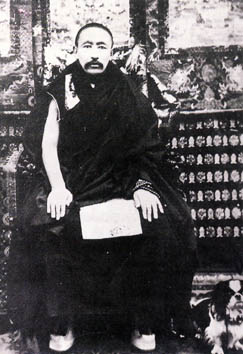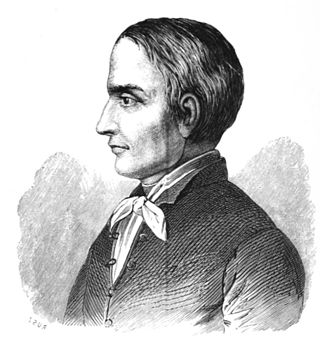
While the Tibetan plateau has been inhabited since pre-historic times, most of Tibet's history went unrecorded until the creation of Tibetan script in the 7th century. Tibetan texts refer to the kingdom of Zhangzhung as the precursor of later Tibetan kingdoms and the originators of the Bon religion. While mythical accounts of early rulers of the Yarlung Dynasty exist, historical accounts begin with the introduction of Tibetan script from the unified Tibetan Empire in the 7th century. Following the dissolution of the empire and a period of fragmentation in the 9th-10th centuries, a Buddhist revival in the 10th–12th centuries saw the development of three of the four major schools of Tibetan Buddhism.

Songtsen Gampo, also Songzan Ganbu, was the 33rd Tibetan king of the Yarlung dynasty and he founded the Tibetan Empire. As also the first of three Dharma Kings of Tibet, he formally introduced Buddhism to Tibet, and built the Jokhang with the influence of his Nepali queen Bhrikuti, of Nepal's Licchavi dynasty. He unified several Tibetan kingdoms, conquered lands adjacent to Tibet, and moved the capital to the Red Fort in Lhasa. His minister Thonmi Sambhota created the Tibetan script and Classical Tibetan, the first literary and spoken language of Tibet.

Drogön Chogyal Phagpa, was the fifth leader of the Sakya school of Tibetan Buddhism. He was also the first Imperial Preceptor of the Yuan dynasty and was concurrently named the director of the Bureau of Buddhist and Tibetan Affairs, serving during the reign of Kublai Khan.

Thubten Choekyi Nyima (1883–1937), often referred to as Choekyi Nyima, was the ninth Panchen Lama of Tibet.

Sándor Csoma de Kőrös was a Hungarian philologist and Orientalist, author of the first Tibetan–English dictionary and grammar book. He was called Phyi-glin-gi-grwa-pa in Tibetan, meaning "the foreign pupil", and was declared a bosatsu or bodhisattva by the Japanese in 1933. He was born in Kőrös, Grand Principality of Transylvania. His birth date is often given as 4 April, although this is actually his baptism day and the year of his birth is debated by some authors who put it at 1787 or 1788 rather than 1784. The Magyar ethnic group, the Székelys, to which he belonged believed that they were derived from a branch of Attila's Huns who had settled in Transylvania in the fifth century. Hoping to study the claim and to find the place of origin of the Székelys and the Magyars by studying language kinship, he set off to Asia in 1820 and spent his lifetime studying the Tibetan language and Buddhist philosophy. Csoma de Kőrös is considered as the founder of Tibetology. He was said to have been able to read in seventeen languages. He died in Darjeeling while attempting to make a trip to Lhasa in 1842 and a memorial was erected in his honour by the Asiatic Society of Bengal.

Nyêmo is a county in the Lhasa west of the main center of Chengguan, Tibet. It lies on the north bank of the Yarlung Tsangpo River, the northern part of the Brahmaputra. The county has an area of 3,276 square kilometres (1,265 sq mi), and as of 2011 had a population of 30,844 people, mostly engaged in agriculture or herding.

Hugh Edward Richardson was an Indian Civil Service officer, British diplomat and Tibetologist. His academic work focused on the history of the Tibetan empire, and in particular on epigraphy. He was among the last Europeans to have known Tibet and its society before the Chinese invasions which began in 1950.

Ippolito Desideri, SJ was an Italian Jesuit missionary and traveller and the most famous of the early European missionaries who founded Catholic Church in Tibet. He was also the first documented Tibetologist and the first European to have successfully studied both Classical and Standard Tibetan.

Lha-bzang Khan was the ruler of the Khoshut tribe of the Oirats. He was the son of Tenzin Dalai Khan (1668–1701) and grandson of Güshi Khan, being the last khan of the Khoshut Khanate and Oirat King of Tibet. He acquired effective power as ruler of Tibet by eliminating the regent (desi) Sangye Gyatso and the Sixth Dalai Lama, Tsangyang Gyatso, but his rule was cut short by an invasion by another group of Oirats, the Dzungar people. At length, this led to the direct involvement of the Chinese Qing dynasty in the Tibetan politics.

The location of Tibet, deep in the Himalaya mountains, made travel to Tibet extraordinarily difficult at any time, in addition to the fact that it traditionally was forbidden to all western foreigners. The internal and external politics of Tibet, China, Bhutan, Assam, and the northern Indian kingdoms combined rendered entry into Tibet politically difficult for all Europeans. The combination of inaccessibility and political sensitivity made Tibet a mystery and a challenge for Europeans well into the 20th century.

Tsepon Wangchuk Deden Shakabpa was a Tibetan nobleman, scholar, statesman and former Finance Minister of the government of Tibet.

Philippe Édouard Foucaux was a French tibetologist. He published the first Tibetan grammar in French and occupied the first chair of Tibetan Studies in Europe.

The Phagmodrupa dynasty or Pagmodru was a dynastic regime that held sway over Tibet or parts thereof from 1354 to the early 17th century. It was established by Tai Situ Changchub Gyaltsen of the Lang family at the end of the Yuan dynasty. The dynasty had a lasting importance on the history of Tibet; it created an autonomous kingdom after Yuan rule, revitalized the national culture, and brought about a new legislation that survived until the 1950s. Nevertheless, the Phagmodrupa had a turbulent history due to internal family feuding and the strong localism among noble lineages and fiefs. Its power receded after 1435 and was reduced to Ü in the 16th century due to the rise of the ministerial family of the Rinpungpa. It was defeated by the rival Tsangpa dynasty in 1613 and 1620, and was formally superseded by the Ganden Phodrang regime founded by the 5th Dalai Lama in 1642. In that year, Güshi Khan of the Khoshut formally transferred the old possessions of Sakya, Rinpung and Phagmodrupa to the "Great Fifth".

Tsangpa was a dynasty that dominated large parts of Tibet from 1565 to 1642. It was the last Tibetan royal dynasty to rule in their own name. The regime was founded by Karma Tseten, a low-born retainer of the prince of the Rinpungpa dynasty and governor of Samdrubtsé in Tsang since 1548.

The main religion in Tibet has been Buddhism since its outspread in the 8th century AD. As of 2022 the historical region of Tibet is mostly comprised in the Tibet Autonomous Region (TAR) of China and partly in the Chinese provinces of Qinghai and Sichuan. Before the arrival of Buddhism, the main religion among Tibetans was an indigenous shamanic and animistic religion, Bon, which would later influence the formation of Tibetan Buddhism and still attracts the allegiance of a sizeable minority of Tibetans.
Karma Tenkyong, in full Karma Tenkyong Wangpo, was a king of Tibet who ruled from 1620 to 1642. He belonged to the Tsangpa Dynasty which had been prominent in Tsang since 1565. His reign was marked by the increasingly bitter struggle against the Gelugpa sect and its leader the Dalai Lama. The outcome was the crushing of the Tsangpa regime and the establishment of the Dharma-based Tibetan state that endured until 1950.
Ernő Hetényi was a Hungarian tibetologist and the leader of the Arya Maitreya Mandala for Eastern Europe.
Buddhists, predominantly from India, first actively disseminated their practices in Tibet from the 6th to the 9th centuries CE. During the Era of Fragmentation, Buddhism waned in Tibet, only to rise again in the 11th century. With the Mongol invasion of Tibet and the establishment of the Mongol Yuan dynasty (1271–1368) in China, Tibetan Buddhism spread beyond Tibet to Mongolia and China. From the 14th to the 20th centuries, Tibetan Buddhism was patronized by the Chinese Ming dynasty (1368–1644) and the Manchurian Qing dynasty (1644–1912) which ruled China.

Changkya Rölpé Dorjé (1717-1786) was a principal Tibetan Buddhist teacher in the Qing court, a close associate of the Qianlong Emperor of China, and an important intermediary between the imperial court and Inner Asia. He also oversaw the translation of the Tibetan Buddhist canon into Classical Mongolian and Manchu. He also was involved in the compilation of a quadrilingual set and supervised the translation from Chinese into Manchurian, Mongolian and Tibetan of the entire Śūraṅgama Sūtra completed in 1763; the Tibetan translation is currently preserved in a supplement to the Narthang Kangyur.

Per Kjeld Sørensen is a prominent Danish Tibetologist who specialises in Tibetan and Himalayan history, literature and culture. Since 1994 he has been Professor of Central Asian Studies at Leipzig University, Germany.























